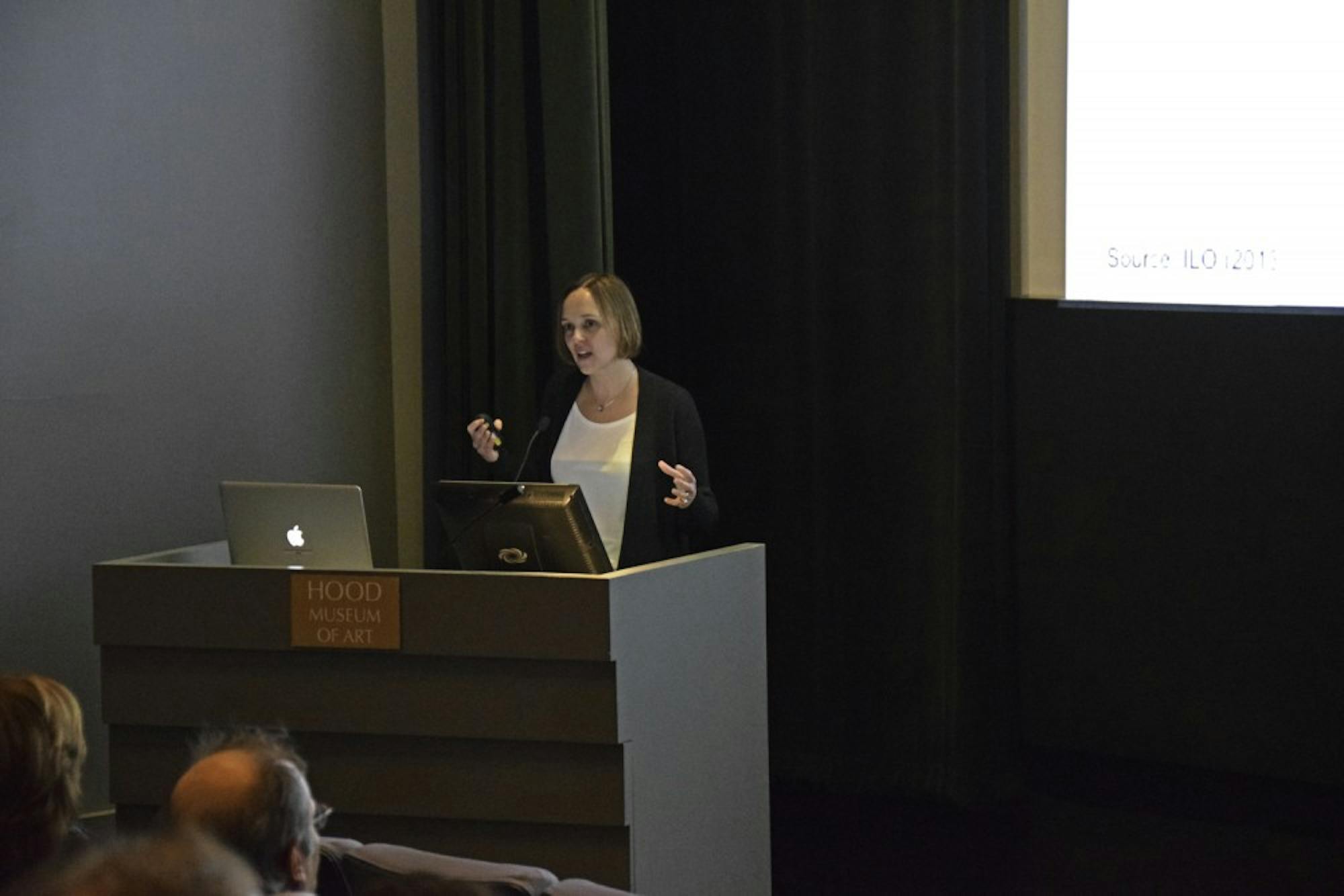Growing up in the former Yugoslavia in riverside town on the Italian border — what is now Solkan, Slovenia — economics professor Nina Pavcnik remembers shopping trips across the border to buy jeans and foods that were unavailable due to strict laws imposed by the nation’s trade regime.
These trips sparked her interest in international trade, and on Wednesday afternoon, Pavcnik delivered the 27th Presidential Faculty Lecture, highlighting her more than 30 years of research on the effects of changes in international trade regulations on developing countries.
Pavcnik concluded that increases in international trade tend to benefit workers in export-oriented industries or regions while harming those involved import-competing industries or regions. She noted that farmers in countries such as India tend to suffer economic loses with increased global involvement.
Pavcnik, who has served as a consultant to the United Nations, the World Trade Organization, the U.S. Department of Labor and the World Bank, said that she sought to make her lecture as comprehensible as possible without compromising the research behind it.
“When you put together this lecture, one thing that you need to think about is how do you present to the audience of academics who are not economists,” Pavcnik said in an interview after the lecture. “I hope what I have done is that I presented at the level that showed the rigor of the research underlying the results [and] still be accessible.”
In the lecture, which took place in the Hood Auditorium, Pavcnik discussed the ongoing debate between economists who argue that international trade promotes growth and inherently reduces poverty and those who contend that international trade perpetuates poverty by enabling corporations to exploit low-wage workers.
Her research is intended to provide policymakers with a better understanding of mechanisms for the reallocation of resources within a country and to allow them to identify the winners and losers in global trade.
College President Phil Hanlon praised Pavcnik after the lecture for her enthusiasm as a teacher and her influence in her field.
“Professor Pavcnik is one of our most distinguished faculty members, and her work is highly influential across the world of policymakers,” Hanlon said in an interview with The Dartmouth. “She’s a passionate teacher, and she’s kind of the ideal teacher-scholar that we strive for at Dartmouth.”
Pavcnik discussed the effects of the liberalization of trade policy in India, Vietnam and Colombia. She found that Vietnam has experienced extremely positive growth since the 2001 U.S.-Vietnam Bilateral Trade Agreement, which allowed Vietnamese businesses to export to the U.S. much more easily by reducing importation taxes from 23.4 percent to 2.4 percent. She said that trade reform in Colombia has done little to change employment across industries. Indian families living in districts more exposed to foreign competition faced lower industrial and agricultural wages and higher rates of poverty.
Pavcnik said that her lecture was built upon many years of research during her 15 years at Dartmouth. Most of her research has looked at the effect of trade policy changes on low-income countries and their inhabitants.
“I go from one study to another,” she said. “Often, when you work on one study, you get ideas for the following study, so it’s all connected and continuous.”
Jake Marston ’15 and Kirill Savolainen ’15, who attended the lecture, said that their experiences as students in Pavcnik’s international economics seminar this term have been positive and informative.
“It was really insightful to hear her come and talk very generally about 30 years of trade, winners and losers, and who it’s affecting,” Marston said. “In class we dive into a lot of these papers in a ton of detail, and so I personally enjoyed zooming out a little and hearing what she had to say to the general audience about some of the big takeaways of international trade.”
Savolainen agreed that it was helpful to look at the bigger picture instead of at “tiny details” within the papers they read in class.
Pavcnik also examined the link between international trade and child labor, citing the decline of child labor by about 2.2 million children in Vietnam during the period of trade liberalization in the 1990s. Half of this, she said, was a product of changes in the price of rice while the other half was a product of increased international trade.
She cited India as a counterexample, where increases in trade have led to declines in schooling and literacy and increases in child labor. She also noted that the caste system in India is a limiting factor on hierarchical mobility among workers.
Economics professor Alan Gustman said that Pavcnik was successful in framing her research in the lecture.
“What she was able to do was to translate the complicated economics and the importance of having data on individuals into this before-and-after, discuss the complexities of what happens when trade policy is affected individually and talk about where people can lobby and affect it as opposed to finding instances where the structure of the trade change was imposed on the country so that the balance wasn’t effective,” he said. “She’s really a talented teacher, there’s no doubt about it.”




